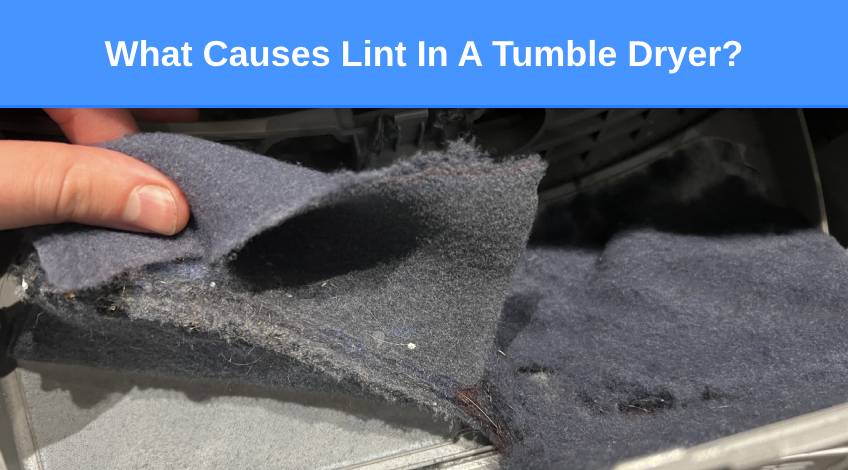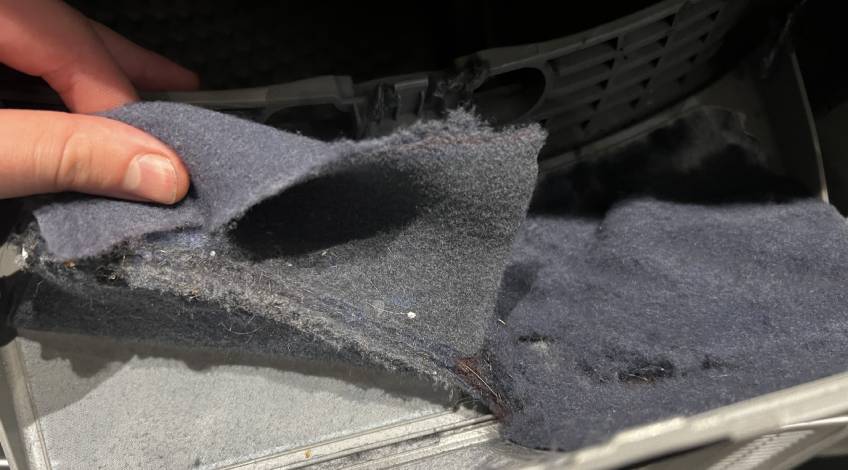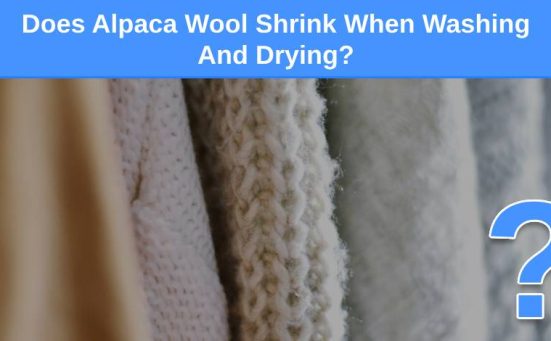
What Causes Lint In A Tumble Dryer?
If you own a tumble dryer you’ll be all too familiar with lint. You should also be clearing the lint filter after every use to improve energy efficiency and prevent your dryer from catching fire.
But have you ever wondered where all that lint comes from and what causes it? If you have, keep reading, because in this article we take a close look at lint and answer the above questions and more besides.
What Is Tumble Dryer Lint?
The lint that’s found in our tumble dryers is basically tiny pieces of the fibres used to make the fabric our clothes are made from. Lint is mostly made up of fibres from natural fabrics like cotton and wool.
The threads that are weaved into materials are made from small fibres twisted together. These threads can become loose and even detach themselves from the fabric through everyday wear.
As we move around, we create friction which makes these minute fibres loosen their grip or detach from the fabric. Then once the clothes are subjected to the water and agitation of the washing machine, these fibres are further loosened or detached but many stick to the fabric because they’re wet.
What Causes Lint To Form In Our Tumble Dryers?

Once the items are tumbled the heat dries the fabrics and these minute fibres fall off and get blown around the drum by the hot air. They then get trapped in the lint filter which is why it needs emptying after every use.
So the lint forms through friction making minute fibres break loose of the material as we wear the clothes. These loose threads are then subjected to more friction in the washing machine but many will stay on the fabric because they are wet.
Once the clothes start to dry in the tumble dryer, those loose fibres dry and detach from the fabric and get blown around the drum by the hot air, before finding their way into the lint trap.
Is It Possible To Prevent Lint From Forming In The Tumble Dryer?
The truth is, it’s impossible to prevent lint from forming in the tumble dryer. If you wear clothes and wash and dry them mechanically, you’ll always produce lint.
The only way to keep your dryer lint free would be to not use it and find an alternative way to get your clothes dry. There are a couple of ways to dry your clothes without them forming excessive amounts of lint which are;
- Line Drying Your Clothes
If the weather permits, drying your clothes on a clothesline is a great way to get them dry and keep lint out of the dryer. Air drying clothes on a clothesline is gentler on your fabrics because there is no excessive heat and no rough tumbling in the drum. - Drying Your Clothes On An Airer
When the weather is not so good for outdoor drying, you can set up an airer in a well ventilated room. As with line drying, your clothes will not get any rough treatment or excessive heat when using an airer. However, issues with damp are more common in homes where laundry is regularly dried on an airer. Which is why the room needs to be well ventilated to prevent dampness becoming a problem.
What Types Of Fabrics Produce The Most Lint?

The fabrics that produce the most lint are fabrics made from natural fibres. Cotton, wool and linen for example are most likely to produce lint.
This is because they are made from tiny fibres woven together into long strands. These fibres can easily be broken off the main strand which is how the lint is formed.
Synthetic fibres are mostly made from longer strands or single strands which makes them less likely to break into small pieces. The problem with synthetic fabrics is they’re more likely to build up a static charge in the dryer. This means they attract any lint that’s in the drum.
Which is why it’s always best to keep fabrics made from natural fibres separate from synthetics when washing and drying.
Are Dryer Balls Good For Removing Lint?
Dryer balls are designed to reduce drying times by allowing the hot air to circulate around the clothes better. If you choose wool dryer balls, they are known to reduce static, and some of the lint in the drum will get stuck on the wool the balls are made from.
However, you shouldn’t rely on wool dryer balls for lint removal. You will need to ensure the lint filter in your dryer is emptied after every use and you should also remove any lint attached to the wool dryer balls as well.
What Does It Mean If There’s No Lint In The Lint Filter?
If, after tumble drying your laundry, the lint filter has no lint or much less than normal, it could mean there’s a blockage in the dryer somewhere.
This could be potentially dangerous because it could cause the dryer to overheat or even catch fire if it’s not sorted out quickly.
What Are The Signs Of Potential Problems Due To A Lack Of Lint?
If the lint filter is empty after a full cycle, there will usually be other tell-tale signs that there’s a problem. These include;
- Longer Drying Times
- Drum And/Or Clothes Overly Hot
- Clothes Not Dry At All
- Dryer Stops Mid-Cycle
- Mouldy, Mildew Smell
If you have noticed any of the above, they will need to be checked out to prevent any damage to your dryer or your home. If you have a vented dryer, the first place to check is the vent and vent hose, ensure all lint is removed and there is a free flow of air.
For more information on Tumble Dryers Not Collecting Lint follow this link.
Can Dryer Lint Be Recycled?
We are all that little bit more environmentally aware nowadays which leads to the question, can you recycle dryer lint? Sadly the answer is no, you can’t recycle dryer lint, recycling companies don’t accept it.
However, it can be repurposed for other uses. Dryer lint can be used as;
- A Fire Starter (Kindling)
- Pet Bedding
- As A Mulch For Plants
- Dry Material For Composting
- To Soak Up Spills
- And Much More
Will There Always Be Dryer Lint?

Dryer lint is inevitable and there will always be some in your dryer’s lint filter. The only way to prevent your clothes from shedding lint in the dryer, is to not dry your clothes in there.
Ensuring it is regularly removed will prevent your home becoming another tumble dryer fire statistic. Plus there are a few ways to reuse dryer lint which means it’s not a complete waste and doesn’t add to our ever growing carbon footprint.
Also using a fabric softener can help reduce the friction because fabric softener lubricates the fibres making them less likely to catch on each other. This can reduce the amount of lint produced in your dryer.
Frequently Asked Questions
Tumble dryer lint is caused by minute pieces of fibre breaking off fabrics as they are subjected to the friction caused by washing and tumble drying clothes. The materials our clothes are made from are made from woven threads which are made from small fibres twisted together. These fibres can easily become broken during the washing and drying process.
You can reduce the amount of lint in your dryer by using a fabric softener. Fabric softeners soften the threads of the fabric and prevent them from catching on each other as they tumble around the drum. This reduces friction which causes the fibres to break off and become dryer lint.
Good quality wool dryer balls catch some of the lint in the drum of the dryer, and also reduce friction by separating the clothes as they tumble in the drum.



